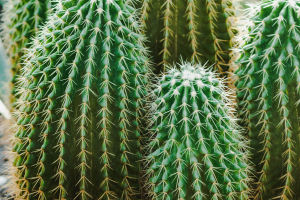Palm trees, belonging to the betel nut family, grace tropical and subtropical regions globally with their slender trunks and expansive, feathery leaves.
Beyond their aesthetic allure, palms hold cultural significance, symbolizing hospitality and peace.
Renowned for easy maintenance, they are a sought-after choice for landscaping, infusing an exotic touch into outdoor spaces.
Yet, beyond their ornamental value, palms offer practical benefits.
In various cultures, palms serve as vital resources, providing edible fruits and versatile leaves for crafting baskets and mats. The wood from these majestic trees finds purpose in furniture and other items. Beyond the utilitarian aspects, palms contribute to environmental health by reducing soil erosion, offering shade, and playing a role in carbon dioxide absorption.
The palm's roots trace back to tropical regions like Africa, Asia, and the Americas, with their presence in the fossil record dating back approximately 800,000 years. As monocotyledonous flowering plants, palms are distinguished by a single seed leaf.
Their adaptability is evident in their growth across diverse climates, from rainforests to deserts, and various habitats, spanning coastal areas to mountain ranges.
Economically significant, palms provide livelihoods in tropical regions. Leaves weave thatch, mats, and baskets, while the fruit yields both sustenance and cooking oil. This ecological powerhouse also fosters biodiversity, offering habitat and sustenance for various animals.
Beyond the conventional, there's a distinct palm known as a red algae, widely embraced in culinary practices. Termed by several names such as creathnach, dillisk, red dulse, and sea lettuce chips, this marine vegetable is renowned for its rich nutrient profile, encompassing 56 essential elements and nutrients, including B vitamins and iodine.
Palms emerge as not only a culinary delight but also a nutritional powerhouse, contributing to diverse culinary traditions, particularly in Icelandic and Irish dishes.
In essence, palm trees transcend their aesthetic role, intertwining with cultural, economic, and ecological aspects of human existence. From landscapes to livelihoods, from culinary adventures to environmental conservation, the palm stands as an emblem of versatility and resilience in the diverse tapestry of our world.
Palms, as members of the betel nut family, stand tall with their slender trunks and expansive, feathery leaves, a signature feature adorning tropical and subtropical landscapes worldwide. Their cultural significance extends beyond aesthetics, symbolizing themes of hospitality and peace.
Widely embraced for their low maintenance, palms are a favored choice in landscaping, injecting a touch of the exotic into outdoor spaces.
However, their appeal goes far beyond ornamental value. Palms play pivotal roles in various cultures, offering edible fruits and leaves for crafting diverse items, from baskets to mats. The versatile wood serves in furniture creation.
Beyond these practical uses, palms contribute significantly to environmental well-being. They combat soil erosion, offer shade, and play a crucial role in carbon dioxide absorption, underscoring their ecological importance.
As monocotyledonous flowering plants with a single seed leaf, they exhibit remarkable adaptability, thriving in climates ranging from rainforests to deserts and habitats spanning coastal areas to mountain ranges.
Economically, palms wield substantial influence, sustaining livelihoods in tropical regions through the production of thatch, mats, baskets, and cooking oil. They also serve as ecological powerhouses, providing habitat and sustenance for various animals.


